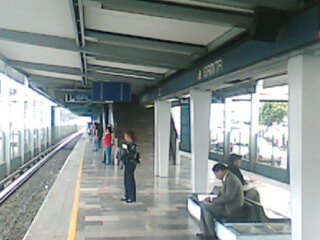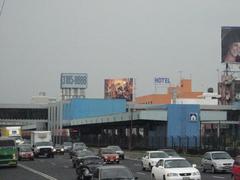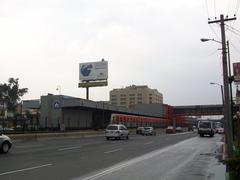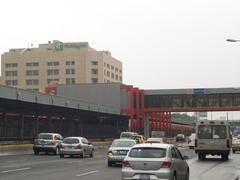
Ermita Mexico City Visiting Hours, Tickets, and Historical Sites Guide
Date: 03/07/2025
Introduction
Ermita, located in the southern part of Mexico City, is a vibrant neighborhood where history, culture, and daily urban life intersect. With roots tracing back to colonial-era hermitages and deep connections to pre-Hispanic traditions, Ermita has evolved into a dynamic district that offers a compelling blend of architectural heritage, religious significance, and community vitality. Its proximity to celebrated neighborhoods like Coyoacán and landmarks such as the Calzada de Tlalpan make it a must-visit for anyone seeking an authentic Mexico City experience. This comprehensive guide provides detailed insights into Ermita’s history, key attractions, practical visitor information, and essential travel tips, ensuring you make the most of your visit to this captivating area. For further reading, see MexicoHistorico and Mexico City Cultural Life.
Table of Contents
- Introduction
- Historical Overview of Ermita
- Cultural and Religious Significance
- Architectural Landscape and Urban Character
- Key Attractions in and Around Ermita
- Visiting Ermita: Essential Information
- Festivals, Local Life, and Community Culture
- Frequently Asked Questions (FAQ)
- Conclusion and Final Tips
- Call to Action
- References
Historical Overview of Ermita
Pre-Hispanic and Colonial Origins
Ermita occupies land once linked to the Aztec capital, Tenochtitlan, established in 1325 (Medium). During the colonial era, Spanish expansion transformed the area, establishing hermitages (small chapels), including the Ermita de San Antonio Abad. These chapels served as spiritual waypoints for those entering the city from the south, marking Ermita’s evolution from rural outpost to emerging urban sector (Wikipedia; Mapcarta).
Urban Growth and Modern Development
The 19th and 20th centuries saw Ermita’s integration into the expanding Mexico City. The construction of major roads like Calzada de Tlalpan and the introduction of public transit—including tram lines and the Ermita metro station—spurred residential and commercial growth, shaping the neighborhood’s unique identity (Mapcarta).
Cultural and Religious Significance
The original hermitages, especially the Ermita de San Antonio, are central to the area’s cultural life. Chapels and churches have long hosted religious festivals, processions, and community gatherings, reinforcing local traditions and fostering a strong sense of identity (MexicoHistorico). Ermita’s blend of religious and secular celebrations continues to attract visitors seeking insight into authentic Mexican customs.
Architectural Landscape and Urban Character
Ermita’s streets showcase a diverse architectural mix: colonial-era adobe structures, early 20th-century homes, Art Deco facades, and modern apartments. Restoration projects aim to preserve this built heritage while accommodating the needs of a growing metropolis (MexicoHistorico; Centro Histórico Architecture). Public parks, plazas, and murals—some inspired by Diego Rivera—provide vibrant gathering spaces and reflect the area’s evolving urban character (Palace of Fine Arts).
Key Attractions in and Around Ermita
Ermita de San Antonio Chapel
- Significance: The namesake hermitage, a modest colonial chapel, has undergone restoration and remains a local spiritual center.
- Location: Near Calzada de Tlalpan and Avenida Ermita Iztapalapa.
- Hours: Daily, 9:00 AM–5:00 PM.
- Admission: Free.
- Tours: Guided tours on weekends; check local schedules.
Calzada de Tlalpan
A historic thoroughfare dating back to the Aztec era, Calzada de Tlalpan links Ermita to both the city center and southern boroughs (Nomadic Matt). Strolling here reveals centuries of architecture and city evolution.
Mercado de Portales
- Description: A bustling marketplace known for plants, antiques, street food, and daily essentials.
- Hours: Mon–Sat 7:00 AM–7:00 PM; Sun 8:00 AM–3:00 PM.
- Experience: Ideal for sampling local cuisine and observing community life (Mexico Travel Secrets).
Parque de los Venados
- Features: Green spaces, playgrounds, jogging paths, public art, and the Benito Juárez Cultural Center.
- Park Hours: Daily, 6:00 AM–8:00 PM.
- Cultural Center: Tues–Sun, 10:00 AM–6:00 PM.
Coyoacán & Frida Kahlo Museum (Casa Azul)
- Location: Short ride south from Ermita.
- Museum Hours: Tues–Sun, 10:00 AM–5:45 PM.
- Tickets: ~250 MXN; advance reservations recommended.
- Highlights: Kahlo’s personal artifacts and artwork (Mexico Travel Secrets).
Museo Nacional de las Intervenciones
- Setting: Housed in the former Churubusco Monastery, east of Ermita.
- Hours: Tues–Sun, 9:00 AM–5:00 PM.
- Admission: ~70 MXN; free on Sundays (Touropia).
Xochimilco Canals
- Attraction: UNESCO-listed ancient canals, best explored by colorful trajinera boats.
- Hours: Daily, 9:00 AM–7:00 PM.
- Experience: Lively music, floating vendors, and traditional celebrations (Travellers Worldwide).
Visiting Ermita: Essential Information
Visiting Hours & Ticketing
- General: Ermita is accessible year-round; most attractions open 8:00 AM–7:00 PM. Museums usually open 10:00 AM–5:00 PM, closed Mondays.
- Admission: Public spaces are free; museums and some cultural sites require tickets (prices vary).
- Tours: Guided walking tours can be booked locally or online for deeper historical context.
Transportation & Accessibility
- Metro: Ermita station serves Lines 12 and 2, connecting to the city center and beyond (Mexico City Metro Guide).
- Buses & Ride-Share: Numerous options for easy transfers; use registered services for safety (Travelsafe Abroad).
- Accessibility: Most major sites are walkable. Some older buildings may have limited access—check with venues if needed.
Safety & Local Etiquette
- Safety: Ermita is generally safe during the day. Be vigilant in crowded areas, avoid displaying valuables, and use ride-shares at night (Teo Mexico Tours).
- Etiquette: Greet vendors politely, tip service staff, and ask before taking photos at markets or religious sites (Mexico Travel Secrets).
Food & Dining
- Cuisine: Enjoy tacos al pastor, tamales, mole, and street food at bustling markets.
- Dining Tips: Choose busy stalls for freshness; reservations recommended for popular restaurants (The Unconventional Route).
Best Time to Visit
- Season: Dry months, November to May, offer the most pleasant weather; spring is especially lively with festivals (Travellers Worldwide).
Festivals, Local Life, and Community Culture
Ermita hosts annual events such as “Noche con Orgullo” (June LGBTQ+ celebrations), religious festivals, and traditional markets. Local tianguis and street food vendors are central to community life. The area’s evolving character is shaped by families, artists, and students, supported by neighborhood associations and cultural centers (Noche con Orgullo 2025; Mexico City Food Tours).
Frequently Asked Questions (FAQ)
Q: What are the typical visiting hours?
A: Most attractions and markets are open 8:00 AM–7:00 PM; museums usually 10:00 AM–5:00 PM.
Q: Is there an entry fee for Ermita’s main sites?
A: Public areas are free. Museums and certain cultural sites require tickets—book in advance for popular venues.
Q: How do I get to Ermita?
A: Use the Ermita metro station (Lines 12 and 2), buses, or ride-share apps for convenient access.
Q: Is Ermita safe for tourists?
A: Yes, especially during the day. Follow standard precautions, especially at night.
Q: Are guided tours available?
A: Yes, for the chapel, museums, and walking routes. Check with local operators for schedules.
Q: What is the best time to visit?
A: The dry season (November–May), especially spring, is most comfortable and festive.
Visuals and Interactive Tools
- Images: Include photos of the Ermita de San Antonio chapel, Calzada de Tlalpan, Mercado de Portales, and Frida Kahlo Museum with descriptive alt text (e.g., “Ermita de San Antonio chapel in Mexico City”).
- Maps: Use interactive maps highlighting Ermita, nearby attractions, metro stations, and recommended walking routes.
- Virtual Tours: Where available, link to virtual experiences of museums or marketplaces.
Conclusion and Final Tips
Ermita offers a rich tapestry of Mexico City’s history, culture, and urban life. From its origins as a colonial hermitage to its lively present-day markets and festivals, Ermita provides both tranquility and vibrancy for visitors. Careful planning—regarding visiting hours, ticketing, transportation, and local etiquette—ensures a smooth and rewarding experience. Engage respectfully with local customs, enjoy authentic cuisine, and use accessible transport options to explore both Ermita and the broader southern boroughs. For further information, see Mexico Travel Secrets and Nomadic Matt.
Call to Action
Ready to explore Ermita and its surroundings?
- Download the Audiala app for interactive maps, curated guides, and real-time event updates.
- Follow us on social media for the latest news, travel tips, and cultural highlights.
References
- Mexico City: The Heart of Mexican Culture and History, 2023, Luke Guevara
- History of Mexico City, 2023, Wikipedia
- Ermita Neighborhood Overview, 2023, Mapcarta
- Exploring the Cultural Significance of Mexico City’s Historic Churches, 2023, MexicoHistorico
- The Revival of Mexico City’s Historic Neighborhoods, 2023, MexicoHistorico
- Mexico City Cultural Life, 2024, Britannica
- Centro Histórico Architecture, 2024, Sally Sees
- Palace of Fine Arts, 2024, PlanetWare
- Noche con Orgullo 2025, 2025, Mexico City Official Tourism
- Mexico City Food Tours, 2024, Airbnb
- Mexico City Metro Guide, 2024, Mexico City Official Tourism
- Nomadic Matt Mexico City Travel Guide, 2024
- Mexico Travel Secrets, 2024
- Tiny Footsteps Travel Mexico City Itinerary, 2024
- Touropia Tourist Attractions in Mexico City, 2024
- Travellers Worldwide Best Time to Visit Mexico City, 2024
- Travelsafe Abroad Mexico City Safety, 2025
- Teo Mexico Tours Safety Guide, 2025
- The Unconventional Route Mexico City Travel Tips, 2024
- Lonely Planet Mexico City Travel Tips, 2024













































































































































































